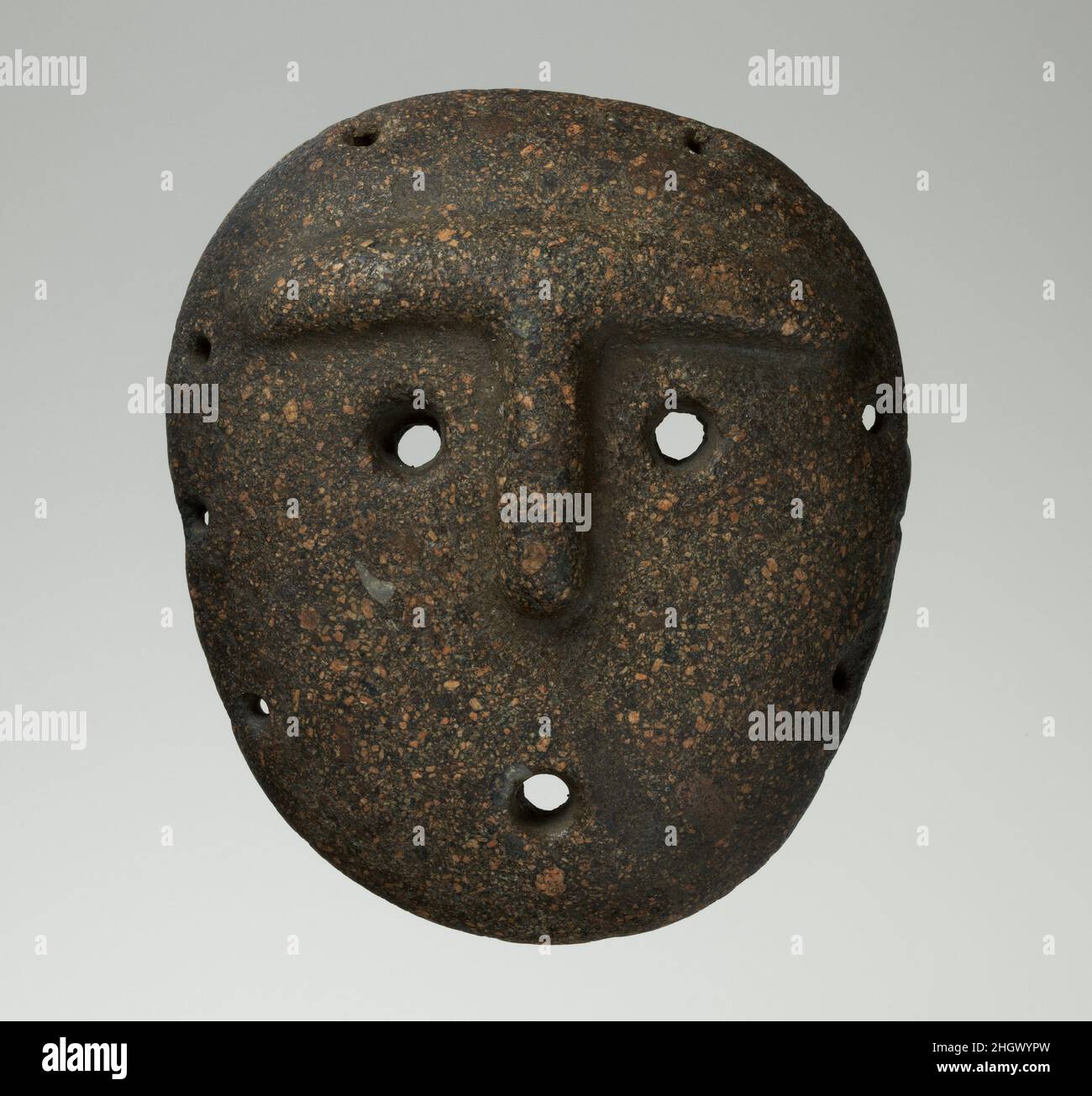Funerary mask 500 B.C.–A.D. 500 Condorhuasi-Alamito This stone mask features an anthropomorphic face with pronounced brow ridge, angular nose, and drilled perforations with raised carved ridges indicating the eyes and mouth. Additional drill holes line the outer edge of the mask, presumably to affix it with fibers to an armature. The mask was most likely attached to a funerary bundle.The Condorhuasi-Alamito peoples were llama pastoralists in the area that is now the Catamarca province of Argentina. They were skilled artisans in a variety of media, including ceramic, metal, and stone. Archaeolo

Image details
Contributor:
MET/BOT / Alamy Stock PhotoImage ID:
2HGWYPWFile size:
42.8 MB (1.6 MB Compressed download)Releases:
Model - no | Property - noDo I need a release?Dimensions:
4000 x 3740 px | 33.9 x 31.7 cm | 13.3 x 12.5 inches | 300dpiDate taken:
20 January 2022More information:
This image is a public domain image, which means either that copyright has expired in the image or the copyright holder has waived their copyright. Alamy charges you a fee for access to the high resolution copy of the image.
This image could have imperfections as it’s either historical or reportage.
Funerary mask 500 B.C.–A.D. 500 Condorhuasi-Alamito This stone mask features an anthropomorphic face with pronounced brow ridge, angular nose, and drilled perforations with raised carved ridges indicating the eyes and mouth. Additional drill holes line the outer edge of the mask, presumably to affix it with fibers to an armature. The mask was most likely attached to a funerary bundle.The Condorhuasi-Alamito peoples were llama pastoralists in the area that is now the Catamarca province of Argentina. They were skilled artisans in a variety of media, including ceramic, metal, and stone. Archaeological evidence suggests that the Condorhuasi-Alamito peoples maintained extensive long-distance contacts with other regions, including the important site of Tiwanaku, near Lake Titicaca in what is now Bolivia.. Funerary mask. Condorhuasi-Alamito. 500 B.C.–A.D. 500. Stone. Argentina, Northwest Argentina. Stone Sculpture